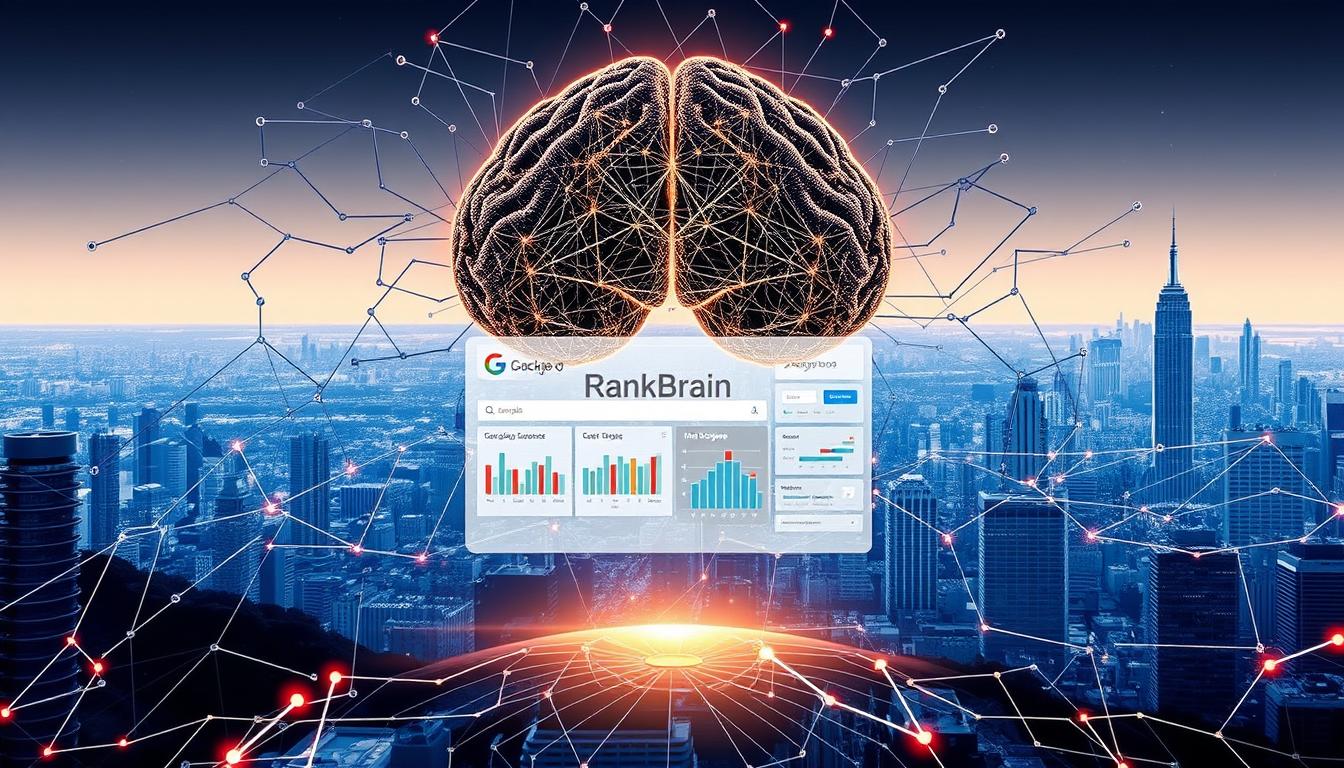
In the ever-evolving landscape of search engine optimisation (SEO), understanding the concept of an entity has become crucial. An entity, in this context, refers to a uniquely identifiable object, which can be a person, place, or thing, defined by its attributes and relationships. This concept has revolutionised how search engines like Google interpret and rank content.
The shift from keyword-based strategies to understanding “things” within context, as Google puts it, “things, not strings,” marks a significant turning point in SEO history. This transition has enabled search engines to move beyond mere keyword matching and delve into the semantics of content, providing more accurate and relevant results.
Central to this evolution is Google’s Knowledge Graph, a vast database that organises information into interconnected entities. Drawing from sources like Wikipedia, the Knowledge Graph transforms unstructured data into a structured, easily accessible format. This transformation has significantly enhanced the way search engines understand and present information, making search results more informative and user-friendly.
This shift towards entity-based SEO underscores the importance of context and relationships in search queries. By focusing on the broader context rather than isolated keywords, modern SEO strategies can better align with user intent, ultimately leading to more effective and relevant search results.
Understanding the Basics of Entities
An entity is a distinct, identifiable concept that search engines recognise. These can be people, places, organisations, or even abstract ideas. Entities act as bridges between unstructured and structured data, helping search engines like Google organise information more effectively.
Entities are defined by their attributes, such as unique identifiers, names, types, and relationships. For example, a person entity like “Barack Obama” has attributes like “former US President” or “author of certain books.” These attributes help resolve ambiguities in natural language, making search results more accurate.
| Attribute | Description | Example |
|---|---|---|
| Unique Identifier | A specific ID or reference for the entity | MREID for “Barack Obama” |
| Name | The common name of the entity | Barack Obama |
| Type | The category of the entity | Person, Place, Organisation |
| Relationships | Connections to other entities | Barack Obama – Michelle Obama |
Entities transform unstructured data into structured formats, enhancing search relevance. Tools like Wikipedia and Wikidata store diverse data points, making it easier for search engines to understand context and deliver precise results.
The Evolution of Semantic Search
Search engine optimisation has undergone significant transformations over the years, shifting from basic keyword matching to a more sophisticated understanding of context and meaning. This evolution has been driven by advancements in semantic search technologies, which focus on understanding the intent and relationships behind search queries.
One of the key milestones in this journey was Google’s acquisition of Freebase in 2005, which later influenced the development of the Knowledge Graph. Introduced in 2012, the Knowledge Graph revolutionised how search engines interpret and present information by organising data into interconnected entities. This marked a turning point in SEO, as search engines began to prioritise context over mere keyword presence.
The Hummingbird algorithm, launched in 2013, further solidified this shift by enabling Google to better understand natural language and semantic signals. This was followed by RankBrain in 2015, which introduced machine learning to improve query interpretation, and BERT in 2018, which enhanced the understanding of complex search intent. These advancements have collectively transformed SEO into a more nuanced, entity-focused discipline.
- Google’s acquisition of Freebase (2005) laid the groundwork for the Knowledge Graph.
- The Knowledge Graph (2012) introduced entity-based search results.
- Hummingbird (2013) prioritised natural language understanding.
- RankBrain (2015) incorporated machine learning for query interpretation.
- BERT (2018) enhanced understanding of complex search intent.
These developments have enabled search engines to deliver more accurate and relevant results by considering the relationships between entities and the context of user queries. As a result, modern SEO strategies now focus on creating comprehensive, contextually rich content that aligns with user intent.
what is an entity in seo
Understanding entities in SEO is essential for modern search strategies. An entity is a unique concept that search engines like Google recognise. It can be a person, place, or idea with distinct attributes and relationships. Entities help search engines organise information better, leading to more relevant results.
Clarifying the Core Concept
Entities differ from keywords because they represent distinct “things” with multiple attributes. For example, “London” can refer to the city, a song, or a film. Entities clarify these ambiguities, making search results more accurate.
Case Examples and Practical Definitions
Consider a business listing. A restaurant’s entity includes its name, location, menu, and reviews. This structured data helps search engines understand the business better, improving its visibility. Similarly, a Wikipedia entry on “Barack Obama” includes attributes like his role as a former president and his books, creating a comprehensive entity profile.
- Entities provide context, helping search engines understand user intent.
- They enable richer search results, like knowledge panels, enhancing user experience.
- Understanding entities leads to more effective SEO strategies, focusing on comprehensive content.
By focusing on entities, content creators can align their work with user intent, improving relevance and rankings. Entities are crucial for modern SEO, offering a more nuanced approach to search engine optimisation.
How Google Recognises and Utilises Entities
Google’s ability to identify and use entities is central to its advanced search capabilities. By leveraging Natural Language Processing (NLP) and sophisticated algorithms, Google can understand the context and relationships between different pieces of information, enhancing search results.
The Role of Natural Language Processing
NLP plays a crucial role in extracting entities from text. Google uses techniques like tokenisation to break down content into words and phrases, and entity linking to connect these tokens to known entities in the Knowledge Graph. This process helps Google understand the meaning and context of the content, improving search relevance.
Google’s Algorithms and the Knowledge Graph
Algorithms such as Hummingbird, RankBrain, and BERT work together with the Knowledge Graph to map entities and improve search performance. The Knowledge Graph acts as a vast database that organises information into interconnected entities, enabling Google to deliver more accurate and informative results.
- Natural Language Processing extracts entities through tokenisation and entity linking.
- Algorithms map entities to the Knowledge Graph for enhanced search performance.
- Schema markup reduces ambiguity, helping search engines interpret data effectively.
- Real-world examples include Google recognising business names and other entities.
By focusing on entities, Google can better understand user intent and deliver more relevant results. This approach has transformed SEO, making it essential to create content that aligns with these advancements in search technology.
Structuring Your Content with Entity Optimisation
Optimising your content with entity signals is a strategic approach to improving search engine performance. By focusing on context and relationships, you can create content that aligns with user intent and enhances search relevance.
Implementing Schema Markup
Schema markup is a powerful tool for highlighting entity attributes. By embedding structured data into your HTML, you can help search engines better understand your content. For example, using schema markup for a business can highlight attributes like name, location, and reviews, making your content more discoverable.
- Use schema markup to define entity types such as organisations, people, or products.
- Highlight key attributes like ratings, prices, or opening hours.
- Ensure structured data is accurately implemented to avoid errors.
Effective Internal Linking Strategies
Internal linking is crucial for establishing relationships between entities. By linking related content, you can create a semantic network that search engines can easily interpret. This approach not only improves user navigation but also reinforces your site’s authority on a topic.
- Link to relevant, high-quality content within your site.
- Use descriptive anchor text that reflects the content being linked.
- Ensure links are logically placed to enhance user experience.
Integrating Entity Clusters
Entity clusters are groups of content centered around a core topic or entity. By creating these clusters, you can establish your site as a trusted source on the subject, improving your search rankings and user engagement.
- Identify key entities relevant to your content.
- Develop a cluster of articles and resources around each entity.
- Use internal linking to connect related content within the cluster.
By implementing these strategies, you can create content that is not only more discoverable but also more engaging for your audience. Optimising for entities is a forward-thinking approach that aligns with how modern search engines understand and rank content.
Entity-Based SEO and Its Impact on Search Rankings
Adopting an entity-based SEO strategy can significantly enhance your website’s search engine performance. By focusing on context and relationships, this approach helps search engines like Google better understand your content, leading to improved rankings and relevance.
Understanding Relevance and Authority
Entity-based SEO boosts relevance by ensuring your content aligns with user intent. It establishes your site’s authority by showcasing expertise on specific topics. For instance, internal linking and structured data help search engines recognize your content’s context, making it more likely to appear in search results.
Measuring Success with Entity Metrics
To gauge the impact of entity-based SEO, track metrics like improved search rankings and increased rich snippet appearances. Tools such as Google Search Console can provide insights into how well your content is performing. For example, optimizing entity attributes can lead to better visibility in knowledge panels.
- Internal linking and structured data reinforce site authority.
- Tracking entity signals with analytics tools helps measure success.
- Practical examples show entity SEO improving search results.
By focusing on entity-based optimization, you can create content that resonates with users and search engines, driving meaningful improvements in your search rankings.
Leveraging Google Knowledge Graph and Related Tools
Google’s Knowledge Graph and related tools offer powerful ways to enhance your site’s entity signals, improving search visibility and relevance. By integrating these tools, you can create a robust online presence that aligns with user intent and search engine algorithms.
Exploring Google Business Profile and Maps
A well-optimised Google Business Profile is essential for local businesses. It provides accurate information like name, location, and hours, which Google Maps uses for local search optimisation. Ensuring your profile is up-to-date helps in geocoding and improves your chances of appearing in local search results.
Utilising External Data Sources and APIs
External data sources and APIs can complement your internal entity data. For example, integrating Wikipedia or Wikidata with your site’s structured data enhances entity mapping. This approach helps search engines understand your content better, leading to improved search rankings.
- Use Google Business Profile to convey accurate entity data.
- Google Maps leverages entity information for local search optimisation.
- Integrate external APIs to build a comprehensive entity map.
- Structured data connects your content to the Knowledge Graph.
By leveraging these tools, you can enhance your site’s visibility and provide users with more relevant information, aligning with Google’s advanced search technologies.
Entities, LLMs and AI in Modern SEO
The integration of artificial intelligence and large language models (LLMs) is reshaping the SEO landscape. These technologies are enhancing how search engines understand and interpret content, making semantic search more advanced than ever.
Bridging the Gap Between AI and Search
AI systems, particularly LLMs, are revolutionising entity recognition and search algorithms. By improving semantic understanding, these technologies enable search engines to better comprehend the context and intent behind user queries. This advancement allows for more accurate and relevant search results, aligning with the evolving needs of users.
Future Trends in Entity-Based Optimisation
Looking ahead, entity-based SEO is expected to become even more sophisticated. The role of AI in managing vast datasets will be crucial, helping to organise information more effectively. As search engines continue to evolve, the integration of AI will likely lead to more human-centred approaches, prioritising content that aligns closely with user intent and preferences.
With the rise of AI, traditional SEO metrics may shift, and new strategies will emerge to keep pace with these technological advancements. The future of SEO is undoubtedly intertwined with AI, promising exciting developments for both marketers and users alike.
Conclusion
Mastering entity-based SEO is crucial in today’s search landscape. Entities—distinct, identifiable concepts like people, places, or ideas—help search engines understand content context and user intent better. This approach has evolved significantly, from Google’s Knowledge Graph to advanced algorithms like BERT, which prioritize semantic understanding over mere keyword matching.
Optimising your content with structured data and internal linking enhances search relevance. These strategies help establish your site’s authority and improve rankings. Looking ahead, AI and NLP will further refine how search engines interpret content, making entity-based SEO even more vital.
In conclusion, aligning your SEO strategy with entity-focused practices is essential for modern search success. By creating contextually rich content, you can enhance your site’s visibility and deliver more value to your audience.
FAQ
How does Google identify entities in search queries?
Google identifies entities through advanced algorithms and the Knowledge Graph, which map out relationships between people, places, and things. This helps provide more accurate and contextual search results.
What role do entities play in improving search engine rankings?
Entities help search engines understand the context and relevance of your content. By optimising for entities, you can improve your site’s authority and relevance, potentially boosting your search rankings.
Can entity optimisation be applied to local businesses?
Yes, local businesses can benefit from entity optimisation by ensuring their Google Business Profile and local citations are accurate and consistent. This helps search engines recognise their presence and relevance in local search queries.
How does schema markup relate to entity SEO?
Schema markup provides structured data that helps search engines understand your content better. By using schema, you can explicitly define entities on your website, improving how search engines interpret and display your information.
Are entities more important than keywords in modern SEO?
While keywords still matter, entities are increasingly important as search engines focus on understanding context and intent. Entities help search engines deliver more relevant results, making them a key part of modern SEO strategies.
Can entity-based SEO improve voice search results?
Yes, entity-based SEO can improve voice search results. Voice searches often seek specific, contextual information, and entities help search engines provide more accurate and relevant answers to these queries.
How can I measure the success of entity optimisation?
Success can be measured through improved search rankings, increased traffic, and enhanced visibility in search results. Tools like Google Search Console and entity-specific metrics can help track performance.
What tools can help with entity research and optimisation?
Tools like Google’s Knowledge Graph, Entity Hub, and schema markup generators can assist in entity research and optimisation. These tools help you identify and structure entities effectively.
Is entity SEO suitable for all types of websites?
Yes, entity SEO is beneficial for all types of websites. Whether you’re a blogger, e-commerce site, or local business, understanding and optimising for entities can enhance your search engine performance.











